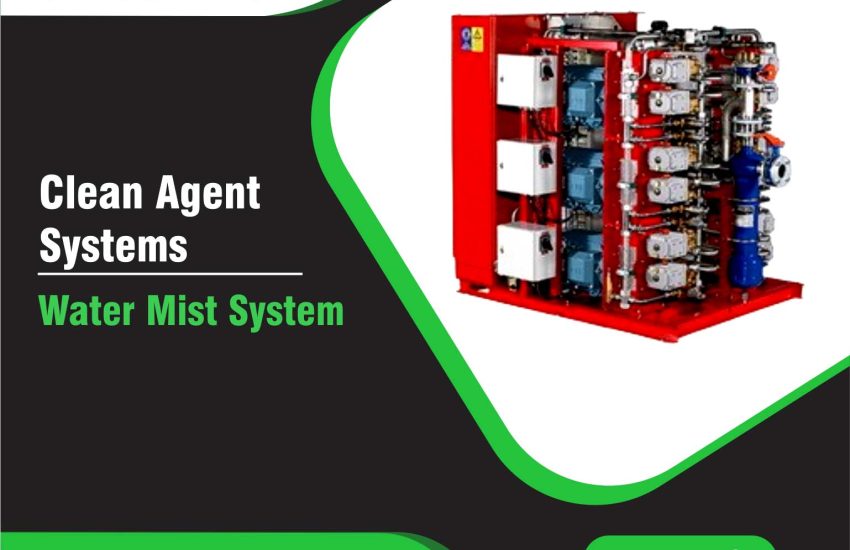Water Mist System is an advanced fire suppression technology that uses fine water droplets to extinguish fires. By releasing a mist of ultra-fine water droplets, the system cools the fire and reduces oxygen levels in the surrounding area, effectively suppressing the flames. Water Mist Systems are increasingly popular in protecting sensitive environments such as data centers, electrical rooms, and industrial applications, where traditional fire suppression systems, like sprinklers, might cause significant water damage. This article outlines the specifications, features, and advantages of Water Mist Systems,
What is a Water Mist System?
A Water Mist System is a fire suppression system that uses small water droplets, typically in the range of 10 to 100 microns, to suppress fires. The fine mist cools the fire by absorbing heat and displaces oxygen to reduce the fire’s intensity. These systems are highly effective in both total flooding and local application fire protection.Deploy these systems in areas such as control rooms, server rooms, and industrial machinery areas, where they protect high-value assets from both fire and water damage.
Water Mist System Specifications
1. Design and Configuration
Water Mist Systems can be designed in several configurations to meet specific needs. The two main types of systems are:
- High-Pressure Systems: These systems generate water mist by forcing water through small nozzles under high pressure, producing very fine droplets. They are commonly used in enclosed spaces.
- Low-Pressure Systems: These use lower water pressures and larger nozzles to create a mist that is suitable for larger areas or more open spaces.
Key Components:
- Water Mist Nozzles: High-performance pumps pressurize the water supply, ensuring consistent mist generation.
- Control Panel: This monitors the system’s status and triggers the release of the mist in the event of a fire.
- Detection Systems: Smoke detectors or heat sensors that activate the system when a fire is detected.
2. Water Mist Droplet Size
One of the defining features of a Water Mist System is the droplet size. The mist consists of very fine water droplets that maximize surface area, making it efficient at cooling fires and absorbing heat. Typical droplet sizes range from 10 to 100 microns, which allows the water mist to suppress fires more effectively than larger droplets used in traditional sprinkler systems.
- Droplet Size: 10-100 microns
- Mist Efficiency: Higher surface area, leading to rapid heat absorption and fire suppression
3. Flow Rate and Pressure
The flow rate and pressure of a Water Mist System depend on the specific application and the size of the protected area. High-pressure systems typically operate at 500 to 1500 psi, while low-pressure systems operate at around 80 to 175 psi. The flow rate is adjusted to ensure that the water mist effectively covers the designated area.
- High-Pressure Flow Rate: 0.1-0.5 GPM (gallons per minute)
- Low-Pressure Flow Rate: 1-3 GPM
- System Pressure: 500-1500 psi (high pressure), 80-175 psi (low pressure)
4. Application Areas
Water Mist Systems can be tailored to suit various types of environments. The system can provide total flooding or targeted protection for specific hazards. Typical applications include:
- Sensitive Equipment Protection: Data centers, server rooms, electrical panels
- Industrial Facilities: Manufacturing plants, warehouses, and factories
- Marine and Offshore: Ships, oil rigs, and offshore platforms
- Buildings and Structures: Hotels, museums, and archives with valuable assets
5. Safety and Environmental Considerations
Water Mist Systems offer significant safety advantages over traditional fire suppression systems, including the following:
- Non-toxic: Water mist is non-toxic and safe for humans, making it ideal for occupied spaces.
- Minimal Water Damage: Since the system uses small water droplets, it minimizes water damage to sensitive equipment and materials.
- Environmentally Friendly: Water mist does not require chemicals, making it a more sustainable option than chemical-based suppression systems.
6. Maintenance and Inspections
Maintaining a Water Mist System ensures it remains in top condition. Key maintenance tasks include:
- Regular Inspections: Checking for blockages in nozzles, ensuring proper nozzle positioning, and inspecting water supply lines.
- Testing: Periodically testing the system’s pressure, flow rate, and nozzle function.
- Servicing: Ensuring the control panel, pumps, and detection systems are functioning properly.
Key Benefits of Water Mist Systems
- Effective Fire Suppression: Water mist suppresses fire through cooling and oxygen displacement, providing a highly efficient solution for fast-acting fire protection.
- Minimal Water Damage: The fine mist significantly reduces water damage compared to traditional sprinkler systems, making it ideal for protecting electronics, machinery, and valuables.
- Safe for Occupied Spaces: Water mist remains safe for humans, enabling the system to operate in environments where people are present.
- Environmentally Friendly: Water is a natural and non-toxic resource, making water mist a greener alternative to chemical fire suppression systems.
- Versatile Application: Water Mist Systems are suitable for both small and large spaces, including high-risk areas such as data centers, control rooms, and industrial facilities.
Conclusion
A Water Mist System offers a cutting-edge solution for fire suppression, providing fast, efficient, and environmentally friendly protection for sensitive areas like data centers, industrial facilities, and electrical rooms. With its ability to minimize water damage, protect valuable assets, and ensure safety in occupied spaces, the system is increasingly becoming the preferred choice for fire protection in various industries. By understanding the system’s specifications and benefits, you can select the ideal solution to meet your facility’s fire protection needs and comply with fire safety standards.


